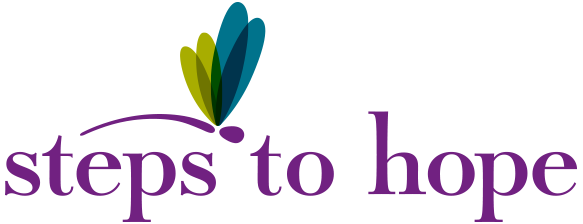Breaking the Silence: Addressing Suicide During National Suicide Awareness Month
September marks National Suicide Awareness Month, a time when we at Steps to Hope shine a spotlight on the often-overlooked link between domestic violence, sexual assault, and suicide. These harrowing issues can intertwine in devastating ways, creating a silent, yet deadly, cycle that claims lives and shatters families.
The Unseen Interconnections
Suicide, often described as a silent killer, can be intricately connected to experiences of domestic violence (DV) and intimate partner violence (IPV). Whether it's an abuser taking the life of an intimate partner before ending their own, or a survivor who struggles with the persistent ghosts of past trauma, the toll is immeasurable. These individuals navigate a private journey of pain and despair, often unseen by the outside world, until it’s too late.
At Steps to Hope, we encounter many survivors of abuse who bear emotional scars so deep that they turn to substance misuse to dull the pain. This self-destructive behavior can lead to a tragic end, as the misuse of substances often spirals into suicidal tendencies. For many, these bad times are short-lived. However, for some, the trauma is inescapable and persistent, leading to chronic feelings of sadness, hopelessness, and ultimately, the contemplation of suicide.
A Harrowing Reality
Research conducted by the Suicide Prevention Resource Center reveals a sobering reality: as many as 1 in 3 survivors of IPV or DV have considered suicide. These individuals are already at higher risk for depression, PTSD, and anxiety, making the struggle to regain normalcy a daunting task. When feelings of worthlessness and powerlessness take root, they can paralyze and obstruct any attempts to build a productive life. The path to healing often involves revisiting traumatic memories, a terrifying prospect for many.
Counseling, although beneficial, can be a double-edged sword. It requires survivors to relive their traumas in order to put them back into a box with a bow on them. The fear of judgment and the isolation that follows can push many towards despair and, ultimately, a suicide attempt—a drastic cry for help, a plea for the pain to stop.
Understanding and Breaking the Cycle
For those who have never walked this path, it is almost impossible to grasp the depth of this reality. The question then becomes: How do we help these survivors? More importantly, how do we break this vicious cycle?
Awareness and Education: By raising awareness and educating the public about the interconnectedness of DV, IPV, and suicide, we can foster a more understanding and supportive community.
Accessible Support Services: Providing easily accessible mental health services and support groups can offer a lifeline to those in need. Ensuring that these services are non-judgmental and empathetic is crucial.
Early Intervention: Recognizing the warning signs of depression, PTSD, and suicidal ideation can lead to early intervention, potentially saving lives. This requires training for those who interact with survivors, including friends, family, and professionals.
Empowerment and Advocacy: Empowering survivors by advocating for their rights and supporting them in their journey to reclaim their lives can instill a sense of worth and power that is often stripped away by abuse.
Community Engagement: Building a strong, supportive community around survivors can combat the isolation and loneliness that feed into despair. Community initiatives and outreach programs can play a significant role in this.
Looking Ahead
As we continue to focus on these critical issues during National Suicide Awareness Month, Steps to Hope remains committed to supporting survivors and breaking the silence that surrounds suicide, domestic violence, and sexual assault. In our next installment, we will delve into the warning signs of suicidal ideation and explore effective ways to offer help and support to those in need.
Together, we can create a world where survivors are heard, supported, and empowered to heal and thrive. Let us all take steps to hope, breaking the cycle of silence and despair.
For more information and resources, please visit Steps to Hope’s website. If you or someone you know is in immediate danger, please reach out to a mental health professional or contact emergency services.
By raising awareness and fostering understanding, we can make a difference. Join us in this critical mission to save lives and build a safer, more supportive community for all.

